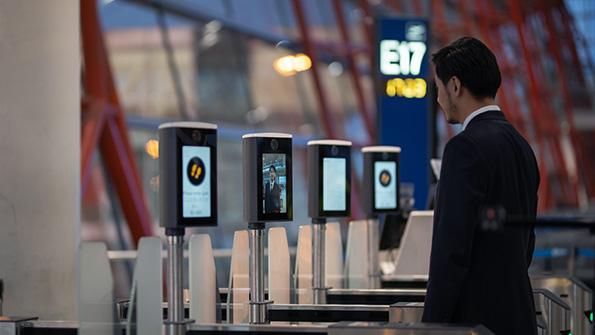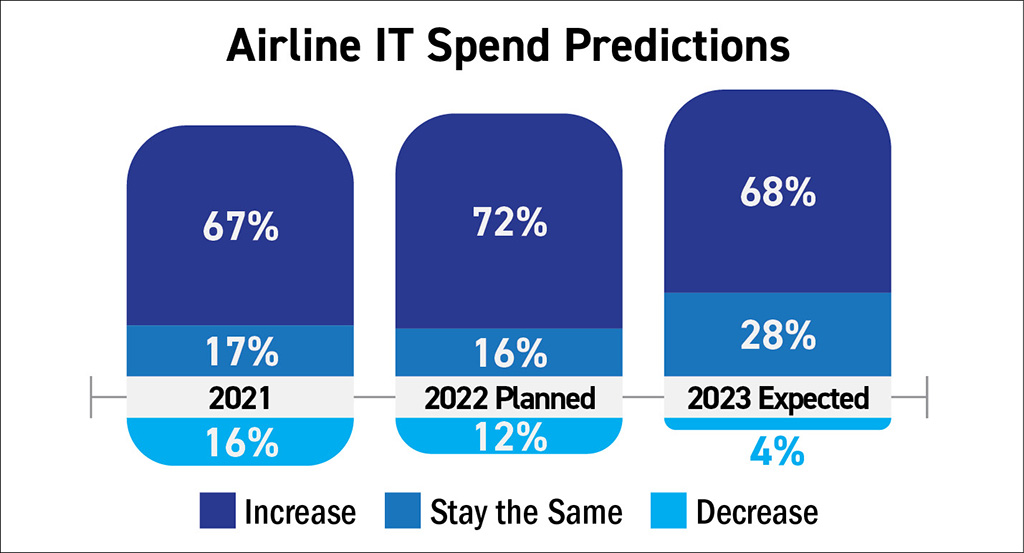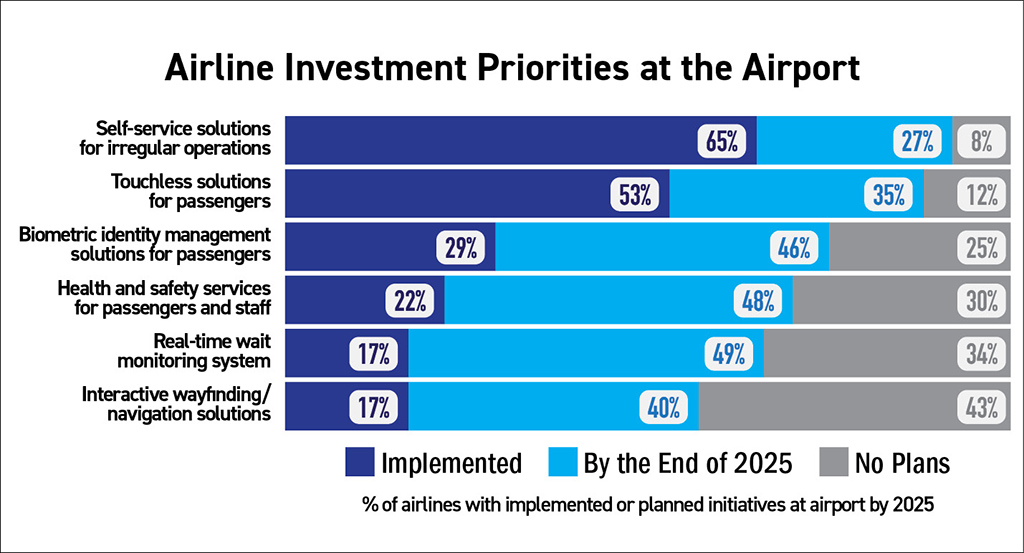
More than half of the world’s airports expect to be biometric-enabled at all passenger touchpoints by 2025.
While this will mean that journeys should begin and end more smoothly, travelers will likely have to endure a degree of choppiness to get to that ideal state. These are two of the main points from SITA’s 2022 Air Transport IT Insights report.
The aviation sector rebounded faster than expected from the pandemic, resulting in near-chaos at some major airports, such as London Heathrow and Amsterdam Schiphol, which both had to limit the number of daily departing passengers to allow personnel—thinned down by layoffs over the previous two years—to cope with the sudden revival in passenger numbers.
The problems are well-known: long queues both at outbound security checkpoints and inbound immigration desks, together with huge stress on baggage-handling systems.
SITA said in its report, released in January, that the first quarter of 2022 saw three times as much mishandled baggage than during the same period in the preceding year. In the second quarter, as passenger numbers started to ramp up for spring and summer vacations in the northern hemisphere, the mishandling rate increased by five times.
The answer to problems like these, according to airport CIOs who were interviewed for the survey, is to significantly increase IT and technology budgets, which would help offset the impact of staff shortages.

Airports face a decision, according to SITA VP airport operations systems Peter Drummond: “Do they invest in technology, or recruit additional staff—which they’ve struggled with in the past?”
The industry’s IT spend is projected to continue its steady year-on-year growth trend since 2020 to support this push for digitalization, with 96% of airlines and 93% of airports expecting their IT budgets to be maintained or to increase in 2023 compared to 2022. In 2022, airline and airport IT spend rose to an estimated $37 billion and $6.8 billion, respectively. However, this is still a long way short of the $49.6 billion that airlines spent in pre-pandemic 2019.
SITA noted that airlines are placing greater emphasis on IT tools to manage irregular operations. Over the next three years, the report states, 90% or more of airlines will invest in IT service management enhancement and disruption warning systems, as well as business intelligence initiatives for aircraft turnaround management, passenger processing and baggage processing.
By 2025, 50% of airports are seeking to implement automated predictive alerts prior to flight disruption events as well as business intelligence initiatives to enable scaling of operations based on demand.
More Self Service
Airlines and airports are investing in key technologies to smooth the passenger experience throughout the journey, to help curb bottlenecks and, in turn, allow redistribution of staff to focus on more complex tasks. Biometrics and self-service technologies are seeing major emphasis.
Airlines, meanwhile, have identified self-service technologies as key to helping manage irregular operations, and this remained their top investment priority in 2022, with touchless solutions and biometric ID management following closely, the report found.

Airports are similarly prioritizing self-service initiatives, placing strong emphasis on self-check-in and self-bag drop, with 86% planning implementation by 2025. Airports’ implementation of a secure single biometric token across all touchpoints has surged from just 3% in 2021 to 39% in 2022, with over half planning implementation over the next three years.
Within the next five to 10 years, countries will be moving to a digital travel credentials, SITA SVP border management Jeremy Springall said.
Passengers renewing their passports are likely to receive both a traditional passport and a digital token that can be used in lieu of the document, although the requirement to carry a physical passport will likely remain for the foreseeable future. It may just not be required to be presented at borders.
Typically, the digital passport will be carried on the passenger’s smartphone. The passenger will share this credential before their journey so they can be pre-cleared by all the necessary stakeholders. Checking the passenger’s identity at airports will be done biometrically.
“At some point, you’ll no longer have to queue at immigration; you will walk down a biometric corridor that will check you,” Springall said.
While the use of digital credentials will eventually speed up passenger flow through airports, Springall admitted that, at first, there would be a price to pay.
The European Union’s forthcoming Entry and Exit System (EES), for example, will require passengers entering the Schengen Area of 27 nations in Europe to have their biometric details taken at a kiosk on first entry. That will cause delays in the early years, but the problem will ease as more people are added to the system.

A digital passport system will only work to its fullest extent if airports at both ends of a journey have the necessary technology. In this respect, however, smaller airports in more remote parts of the world may have an advantage because they will be able to install the system from the ground up and thus leapfrog larger airports where the system has to be layered on top of legacy computer systems.
Another potential problem is a patchwork of different standards springing up in different regions of the world, as happened with vaccine certificates during the pandemic.
“You’re never going to get the whole world to agree. Interoperability between those systems is important. A small number, we can manage,” Springall said.
